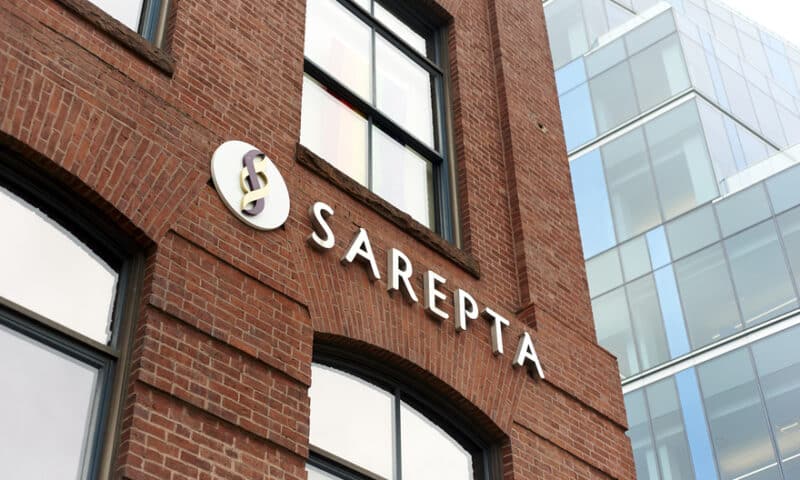Sarepta Therapeutics’ Duchenne muscular dystrophy (DMD) gene therapy has failed to beat placebo in a phase 2 clinical trial. Functional motor ability scores in the SRP-9001 arm were statistically no better than in the placebo group, almost halving Sarepta’s stock price and raising doubts about a key program.
Investigators randomized 41 DMD patients aged four to seven years old to take SRP-9001 or placebo. At 48 weeks, children treated with the gene therapy had a 1.7 mean improvement on the 17-point NSAA functional motor ability scale. The mean improvement in the placebo group was 0.9, causing the clinical trial to miss its primary functional endpoint.
Despite the finding, Sarepta CEO Doug Ingram said he is “more confident than ever” about the gene therapy program. The confidence is, in part, a reflection of Sarepta’s belief the trial was undermined by an imbalance between the two arms of the clinical trial.
In a prespecified analysis of children aged four and five years, Sarepta linked SRP-9001 to a mean change in NSAA from baseline of 4.3. The mean improvement in the placebo arm was 1.9, resulting in a statistically significant difference between the groups.
Sarepta generated those results in a cohort that had balanced characteristics at baseline. Four- to five-year-old children in the SRP-9001 and placebo groups had near-identical NSAA scores and results on mobility tests. In contrast, the six- to seven-year-olds enrolled in the placebo group had a mean NSAA at baseline of 24, versus 19.6 in the SRP-9001 cohort. Results on most of the mobility tests were significantly different in the six- and seven-year-olds, too.
Louise Rodino-Klapac, Ph.D., chief scientific officer at Sarepta, told investors baseline characteristics of six and seven years highly favored placebo, “very likely contributed to the lack of statistical significance” in the cohort and made it “virtually impossible” to detect a treatment difference. The claims reflect Rodino-Klapac’s position that “baseline does predict the trajectory, to some extent.”
Mean NSAA scores for the entire study population were numerically higher in the SRP-9001 group at all time points, although the gap narrowed at Week 24. Ingram said Week 24 fell “in the middle of the most difficult period of the pandemic” and had more out-of-window and missing time points. Yet, while the Week 24 result may be an artifact of the pandemic, Ingram doesn’t think the 48-week data used for the primary endpoint was affected by the crisis.
A fuller picture of what happened will emerge once Sarepta has 48-week data on all participants, including those in the crossover arm. For now, the study remains blinded. Sarepta is wrapping up the trial while running a separate study using commercial process material and preparing to move into phase 3. Ingram said the lessons of the phase 2 will give the phase 3 the best chance of success.
While SRP-9001 may still ultimately succeed, there are now doubts about whether Sarepta will be in a position to seek accelerated approval later this year. Talking to investors on a conference call to discuss the results, Ingram sidestepped a question about the path to market, saying only that he has had no additional discussions with regulators and is focused on generating full data from the ongoing study and a separate clinical trial.
The setback to Sarepta could benefit Pfizer, which recently dosed the first patient in a phase 3 trial of its rival gene therapy. Pfizer’s therapy has suffered from unfavorable safety and efficacy comparisons to SRP-9001 but now may have a shot at being first to market.

